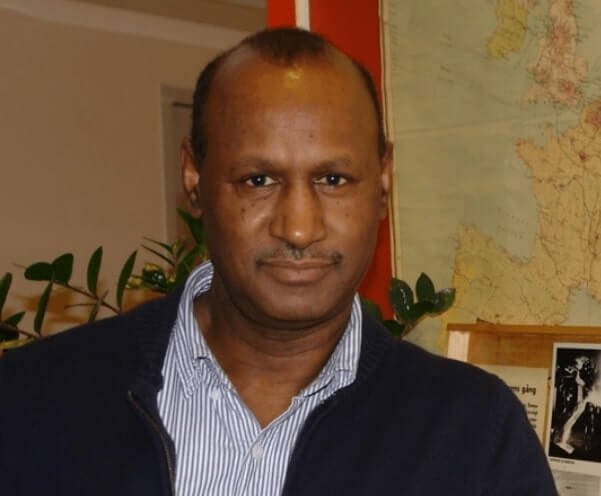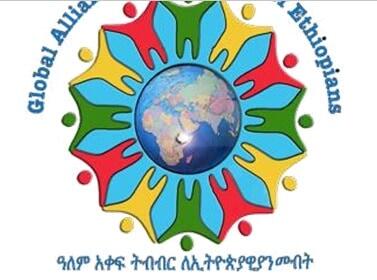Tsegaye Tegenu, PhD
2024-06-25

A long-term national development plan begins with a thorough and comprehensive analysis of the current situation. This analysis forms the foundation upon which vision, goals, strategies, policies, and interventions are formulated.
In countries such as Ethiopia, situation analysis can be approached from various perspectives, each providing unique insights and focusing on different aspects of the issues at hand. Economic perspective focus on economic indicators (such as GDP growth analysis, income distribution, labor market analysis, trade and Investment) to understand how growth rate affects the economic health.
Social perspective looks at social indicators (health, education levels, poverty rates and inequality) and their impact on human development. Environmental perspective considers environmental sustainability (resource depletion, pollution levels, climate change and biodiversity loss) and the impact of development on natural resources. Political perspective examines the political context (governance quality, political stability, human rights) and its influence on development.
Institutional perspective looks at the role of institutions (public administration and legal framework) in shaping development outcomes. Cultural perspective considers cultural factors (such as ethnicity) and their impact on development. Technological perspective examines the role of research and development (R&D), digital inclusion, infrastructure development and innovation in development. Human rights and equity perspective looks at development through the lens of human rights and equity.
Each of these perspectives offers unique insights and highlights different aspects of development challenges and opportunities in developing countries. Reducing the situation analysis into different sectors (delimited area) allows in particular for more in-depth analysis of intervention instruments and implementation measures (various strategies, programs and resources).
However, identifying key underlying challenges facing the country for the purpose of vision and goal formation using these specialized perspectives is difficult due to their fragmented nature. Each perspective offers valuable insights into variety of policy instruments, but they are not fully capturing the interconnectedness of the recurrent problems at hand. To overcome this, a more integrated and holistic approach is necessary.
As I have outlined in part twelve, I have developed a methodological approach that is multidimensional and scalable across different levels of aggregation for effectively identifying recurrent problems and their underlying causes. I have followed different steps to identify the problems and their causes. I have conducted a comprehensive review of existing literature, reports, and studies from government sources and international organizations and identified recurring themes and issues that are frequently mentioned across different sources.
By systematically gathering data, conducting field research along with other experts, and analyzing trends of the multidimensional effects of rapid population growth in the country, I identified 37 recurrent problems facing the country currently. These includes: inflation, unemployment, underemployment, informal economy, currency volatility, economic recession, balance of payments problems, financial crises, public debt crisis, low productivity growth, income inequality, economic vulnerability, slow industrialization, regional disparities, poor innovation and competitiveness, environmental degradation, water shortages, food insecurity, energy crises, economic instability, social unrest, low health coverage, poor living conditions, low educational attainment, social exclusion and marginalization, intergenerational poverty, migration patterns, infrastructure gaps, political discontent, educational disparities, inefficiency and poor service delivery, low public trust and confidence, economic stagnation, political conflicts, lack of accountability, poor crisis response, legal and regulatory failures.
Most of these problems particularly those related to demand for resources, social services, and infrastructure are directly correlated with an increase in the size of the population. Some of the identified problems such as food insecurity, economic instability, lower service coverage, infrastructure gaps and intergenerational poverty exhibit exponential growth. This was during the period when the total population of the country was increasing at a constant growth rate of 3.2 percent. There is no space here to discuss the empirical data on trend analysis and correlations. Those of you interested in details please consult official statistics (Government and World Bank databases).
What is clear is that there is a significant correlation between rapid population growth and many of the 37 recurrent problems mentioned. Rapid population growth exacerbates existing issues and create new challenges in various areas. In other words, as population growth accelerates, the likelihood and severity of these issues tend to increase.
A high correlation between rapid population growth and the recurrent problems does not imply identifying the underlying causes of the problems. Correlation simply indicates that there is a strong relationship between the given variables, meaning they tend to vary together in a predictable manner. Identifying the underlying causes and mechanisms of the 37 recurrent problems is a different matter.
Identifying these underlying challenges requires a more comprehensive approach, which includes case studies, literature review, meta-analysis, and interdisciplinary approaches. By integrating quantitative and qualitative research, theoretical frameworks, and interdisciplinary methods, I was able to uncover six underlying causes of the 37 recurrent problems.
- Resource Constraints: Limited natural resources, insufficient infrastructure, and inadequate social services to meet the needs of a rapidly growing population.
- Economic Instability and Mismanagement: Frequent economic fluctuations, inflation, unemployment, and poor economic policies that fail to stabilize or grow the economy effectively.
- Governance and Institutional Weaknesses: Corruption, lack of accountability, ineffective governance, and weak institutions that fail to implement and enforce policies effectively.
- Rapid Urbanization Pressures: Overwhelming demand for housing, infrastructure, and services in urban areas, leading to slums, inadequate public services, and environmental degradation.
- Social Inequality and Instability: Wide disparities in income, access to services, and opportunities, leading to social unrest, marginalization, and conflict.
- Dependency on External Sources: Reliance on foreign aid, imports, and external debt, making the country vulnerable to external shocks and reducing self-sufficiency.
There is a feedback cycle between these underlying causes, where each cause reinforces and exacerbate the others, creating a complex and interrelated web of challenges. For instance, limited resources lead to poor living conditions and low health coverage, which in turn can exacerbate social inequality. Resource constraints hinder economic growth and industrialization, leading to economic mismanagement and further economic vulnerability.
Poor economic policies lead to unemployment, inflation, and low productivity growth, which exacerbate income inequality and social exclusion. Financial crises and public debt crises result from economic mismanagement, further limiting resources for infrastructure development and public services. Economic mismanagement reduces public trust and political stability, weakening governance structures.
Income inequality and social exclusion lead to low educational attainment and intergenerational poverty, which perpetuate economic mismanagement and poor innovation. Social inequality leads to social unrest and political discontent, further destabilizing governance and economic stability. Inequality in access to healthcare and education limit human capital development, leading to low productivity growth and economic stagnation.
Corruption and inefficiency in governance lead to resource mismanagement and economic mismanagement, exacerbating resource constraints and economic vulnerability. Weak legal and regulatory frameworks result in poor crisis response and regulatory failures, leading to economic instability. Governance weaknesses reduce public trust and lead to political conflicts, which further undermine effective policy-making and resource allocation.
Rapid urbanization strains infrastructure and public services, leading to poor living conditions and educational disparities. Speedy urbanization creates regional disparities, exacerbating social inequality and political discontent. Overcrowded urban areas can lead to environmental degradation and resource constraints, which feed back into social unrest and economic instability.
Economic instability leads to job losses and financial crises, which exacerbate social inequality and political discontent. Social unrest disrupts economic activities and governance, leading to further economic mismanagement and resource misallocation. Instability reduces investment and innovation, leading to low productivity growth and economic stagnation.
Economic dependency creates vulnerabilities to global market fluctuations, leading to economic instability and currency volatility. Dependency on external sources for resources and technology limit domestic innovation and industrial growth, perpetuating economic mismanagement. Reliance on external aid and investments undermine governance and accountability, leading to institutional weaknesses and corruption.
Rapid population growth acts as a catalyst that intensifies feedback loops among these challenges, leading to a compounded impact on the overall system. Rapid population growth intensifies each of the underlying causes. For instance, rapid population growth strain infrastructure. The need for housing, transportation, healthcare, and education infrastructure rises sharply, often outpacing the capacity to develop and maintain these services, leading to infrastructure gaps and poor living conditions.
Managing a rapidly growing population requires effective economic policies to create jobs, control inflation, and ensure stable economic growth. Failure to do so leads to unemployment, underemployment, and economic instability. Rapid population growth strains social services and safety nets, leading to higher levels of intergenerational poverty and social inequality.
Managing a larger population requires efficient and effective governance. Rapid growth overwhelms institutions, leading to inefficiency, corruption, and weak regulatory frameworks. Increased competition for limited resources leads to political discontent, conflicts, and a decrease in public trust and confidence in government institutions.
Rapid urbanization driven by internal migration leads to overcrowded cities, inadequate housing, and strained public services, exacerbating regional disparities and poor living conditions. Rapid urban expansion often comes at the expense of environmental sustainability, leading to further degradation and resource constraints.
A growing population leads to increased social tensions and unrest, particularly if economic opportunities and public services are insufficient to meet the needs of the populace. The economic system becomes more susceptible to shocks and crises due to the increased pressure of supporting a larger population without adequate resources or management.
To meet the needs of a growing population, the country becomes more dependent on imported food, energy, and goods, which can lead to balance of payments problems and increased vulnerability to global market fluctuations. Relying more heavily on external aid and foreign investments to support the growing populations, leads to vulnerabilities and dependencies that undermine long-term sustainability and self-reliance.
Rapid population growth serves as a common denominator that exacerbates the feedback cycles of the underlying causes of the 37 recurrent problems. It intensifies resource constraints, economic mismanagement, social inequality, governance weaknesses, urbanization pressures, economic and social instability, and dependency on external sources.
Policymakers and stakeholders need to understand these underlying causes, mechanisms and feedback cycles to formulate vision, goals, and objectives. This understanding not only highlights the interconnections among the challenges but also helps in identifying leverage points where strategic interventions can have the most significant impact.

















As the age old exclamation goes ‘Here goes the neighborhood!!!’, when one part of the Horn of Africa goes tranquil, another one catches fire. Some of you who, for some incomprehensible reasons, thought the country you hate with passion, Ethiopia, is no more. You move your jaw saying it has been eaten up by termites and has decayed beyond salvation. You are seen telling us any endeavor to save the dying(dead) ‘joint’ would be futile. You ltry to tell us Ethiopia as something that never attained the status of ‘statehood’, but rather a country that was Harry Truman’s making of a hodgepodge because he did not know what to do with it after it was left behind by Mussolini after WWII in 1945 and it is a country that deserve to go asunder now. You told it was given a status of an anchor state that it never deserved and you were seen dancing hula hoop when you thought that prestige was unceremoniously taken away because Brother H.E. President Ruto was invited to The White House. All I can say is ‘Well, well, well!!!’
Folks, there one thing that has been befuddling me since the late 1960’s. That is: Why do some individuals hate Ethiopia so much? Why do some individuals hate Eritrea so much? Why do some individuals hate Somalia so much? Why do some individuals Djibouti so much? All these nations are countries of upright and noble people. Why, why, why? Each one of these countries is the one that gave them the opportunity to get educated or at least provided them shelters and protection in their trying times. Why so much hate? Why?
Peace y’all!!!
Btw, keep posting such intuitive articles Brother Tsegaye Tegenu, PhD.